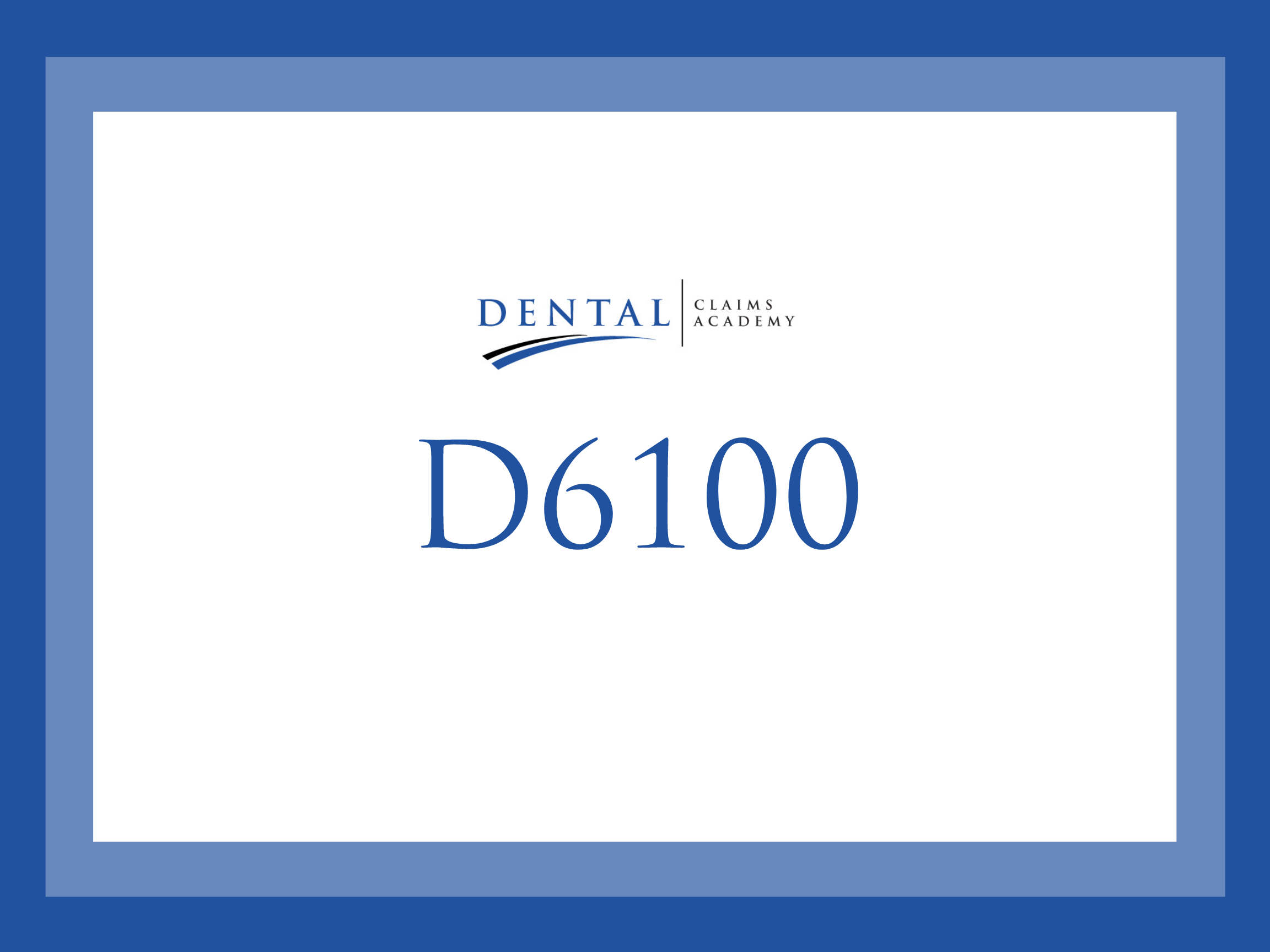When treatment is not successful, it may be necessary to remove the implant.
Once an implant is placed, the bone integrates with the dental implant. This process is known as Osseointegration. Simply put, the patient’s bone grows around the implant. Time for this process to be complete varies by patient. Generally speaking, it takes 4-6 months for this healing phase. Sometimes, the body rejects this implant and it never heals. Thus requiring removal. While there are many reasons necessitating removal of the implant, this article will focus on how to document the removal procedure.
How do I document this implant removal procedure?
I often see a tooth extraction procedure documented and reported on a claim for implant removal. This is not accurate as this is not the removal of a natural tooth. Train your team to ensure this coding error does not occur.
CDT codes serve as a way to accurately document what you do, regardless of whether an insurance claim is filed or not. Always select the CDT code from the current code set that most accurately describes the procedure performed.
The proper code to document and report to a payer for removal of an implant is:
D6100 implant removal, by report
Any CDT procedure code with the words, “by report” in the nomenclature, requires a narrative. For D6100, your clinical documentation should include why the implant needs to be removed. In other words, what is wrong necessitating the removal. For example, it could be peri-implantitis leading to bone loss around the implant, the body rejecting the implant due to an allergic reaction to the material, or even simply, patient dissatisfaction.
Be specific in your documentation as to the reason for the removal. Include this information in a narrative attached to your claim when reporting D6100 to a dental payer. Additionally, include the initial placement date in your narrative. It is also helpful to include a radiographic image with your claim.
Are there other procedures that are commonly performed?
Yes, there are. It is not unusual for a bone graft to be performed at the time of implant removal. While this is not the only procedure that may be performed at the time of implant removal, it is the most common. When reporting a bone graft placement at the time of implant removal, report, D7953. It is important to note how the nomenclature and descriptor for D7953 defines this code. The descriptor is often overlooked but it clearly indicates this code is appropriate for a graft placed in an implant removal site at the time of removal.
D7953 bone graft for ridge preservation – per site
Osseous autograft, allograft or non-osseous graft is placed in an extraction or implant removal site at the time of the extraction or removal to preserve ridge integrity (e.g., clinically indicated in preparation for implant reconstruction or where alveolar contour is critical to planned prosthetic reconstruction). Membrane, if used, should be reported separately.
Any membrane placed in conjunction with D7953 procedure is documented and reported separate. Those codes are D4266 or D4267. The code selected depends on whether the barrier membrane placed is resorbable or non-resorbable.
D4266 guided tissue regeneration – resorbable barrier, per site
This procedure does not include flap entry and closure, or, when indicated, wound debridement, osseous contouring, bone replacement grafts, and placement of biologic materials to aid in osseous regeneration. This procedure can be used for periodontal and peri-implant defects.
D4267 guided tissue regeneration – non-resorbable barrier, per site
This procedure does not include flap entry and closure, or, when indicated, wound debridement, osseous contouring, bone replacement grafts, and placement of biologic materials to aid in osseous regeneration. This procedure can be used for periodontal and peri-implant defects. Includes implant removal.
Reimbursement from code D6100 for your dental practice
For reimbursement consideration, the dental plan must include what is known as an implant rider. In other words, additional benefits for dental implants and associated procedures are attached to the patient’s plan. Not all plans include an implant rider. Even with the coverage, all associated procedures may not be considered for reimbursement. Regardless of reimbursement or lack thereof, document and report what you do.
Properly educate your team on dental coding and documentation
Train your team on what you have learned by reading this article to ensure coding compliance. Training and documentation of that training is key in not only ensuring coding compliance but in ensuring accurate reimbursement is considered and received.
You now know how to properly document and report the scenario of an implant removal, bone graft placement at time of removal and any barrier membrane that may be used. Navigating coding associated with implant services can be challenging even for the most experienced team member. Avoid future confusion and simple mistakes by signing up for Dental Claims Academy webinars covering all things coding and documentation
Current Dental Terminology, © 2020 American Dental Association. All rights reserved
Related Posts
Dental revenue resources from Dental Claim Support



